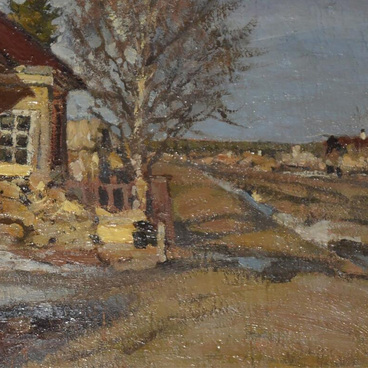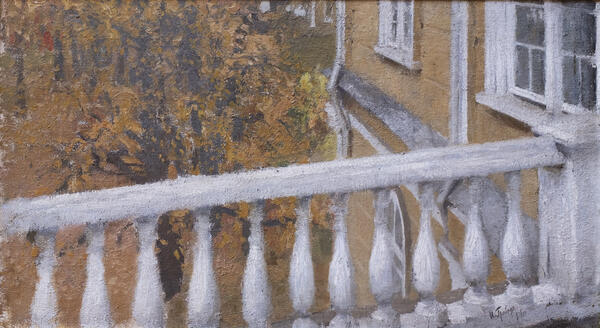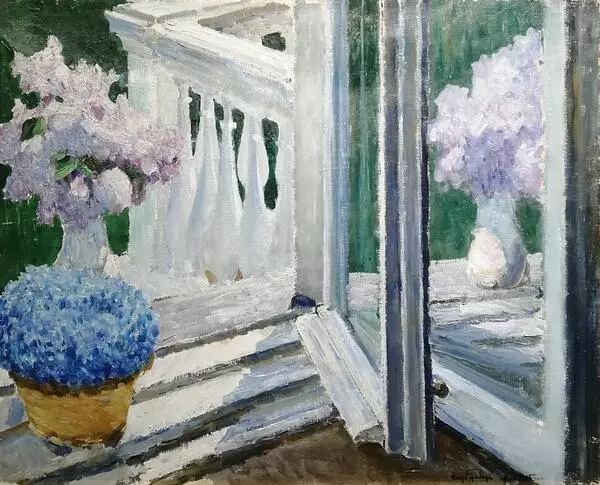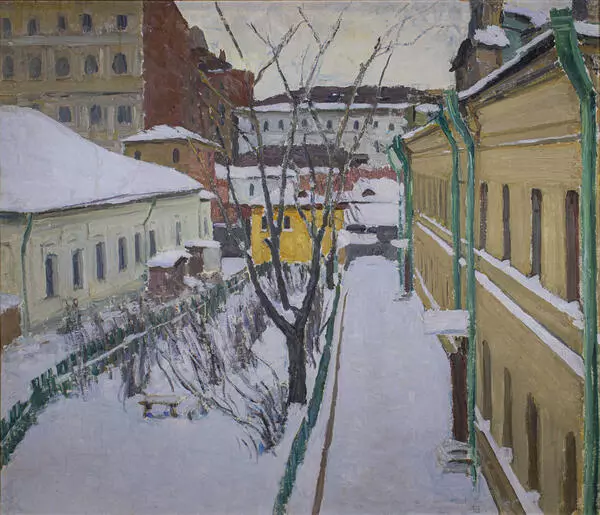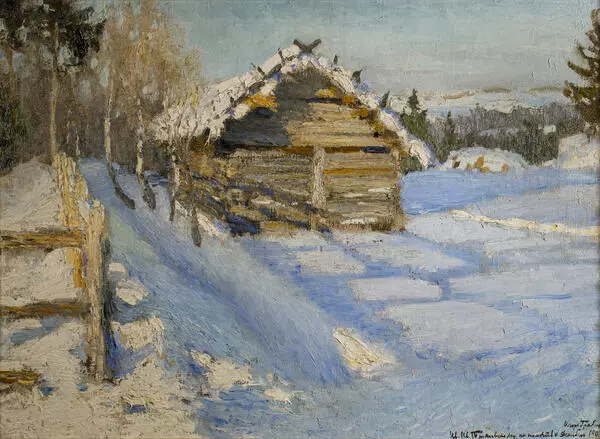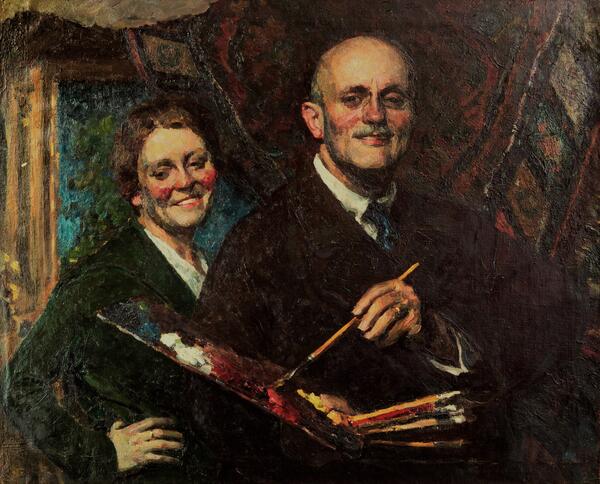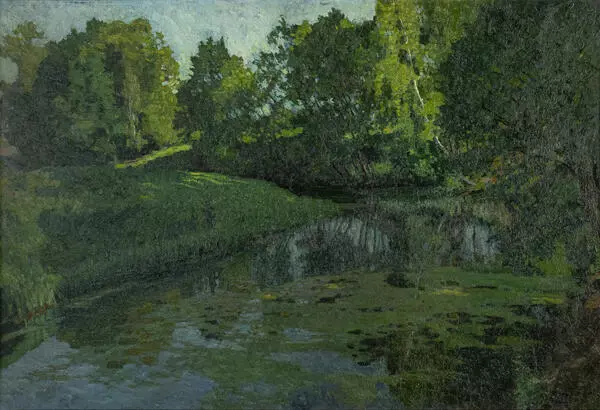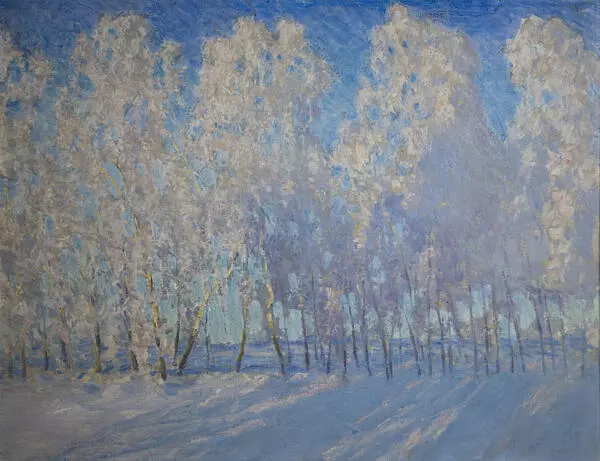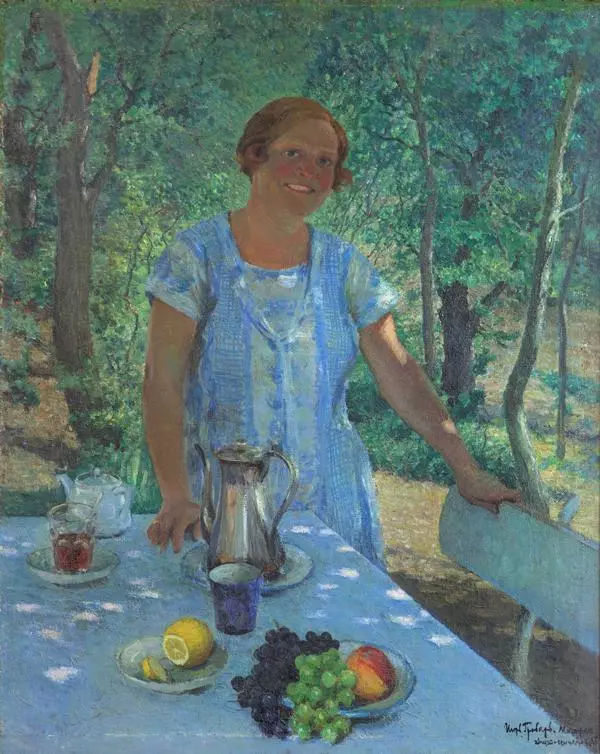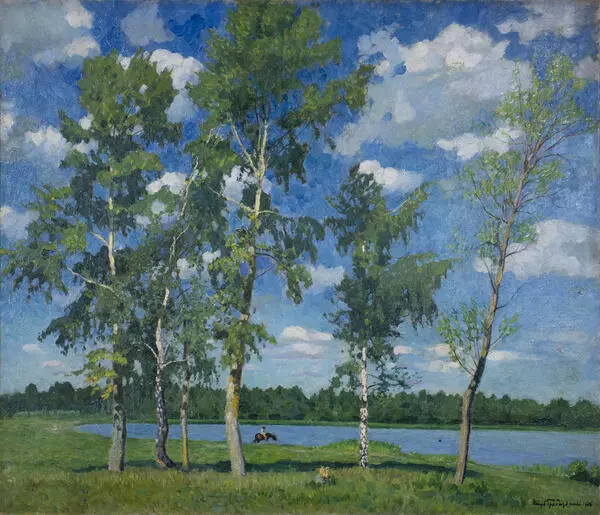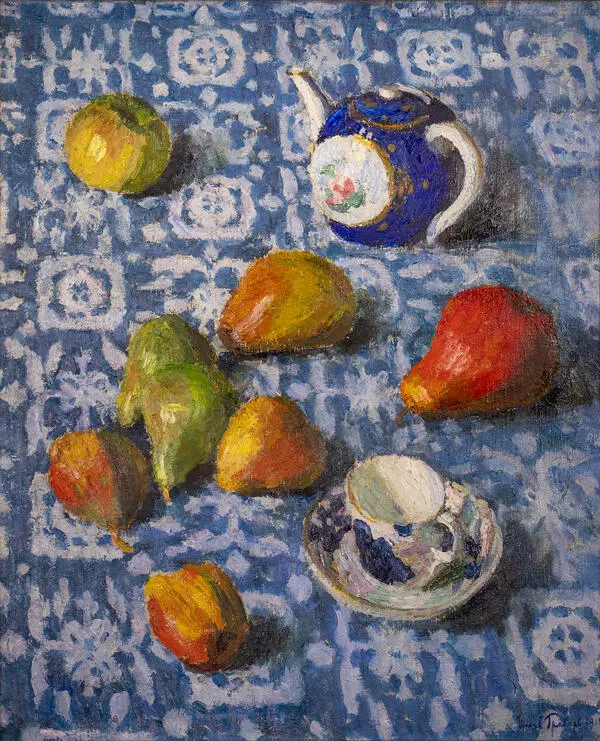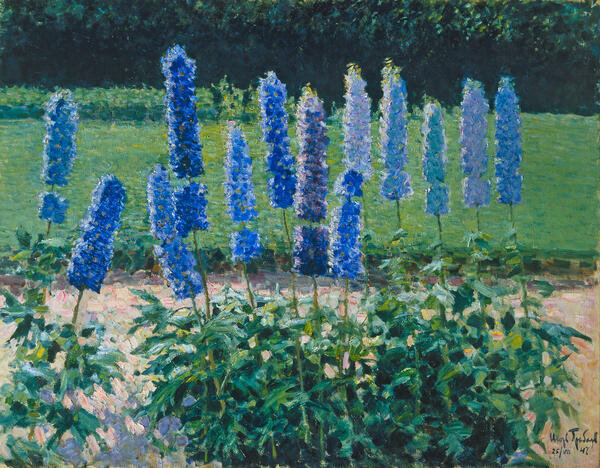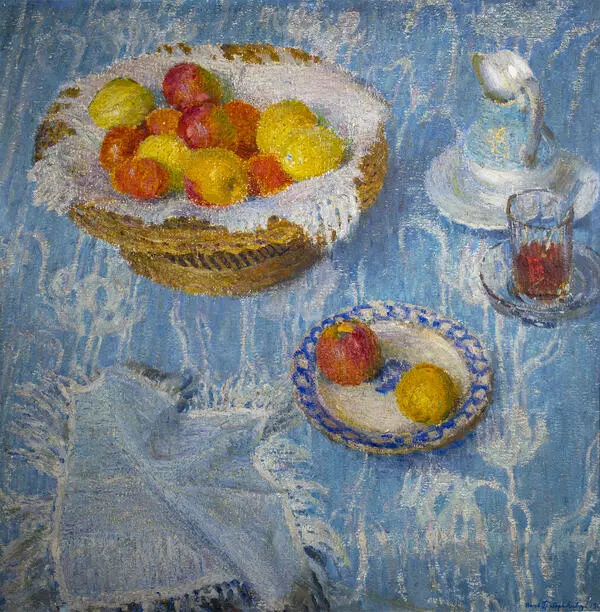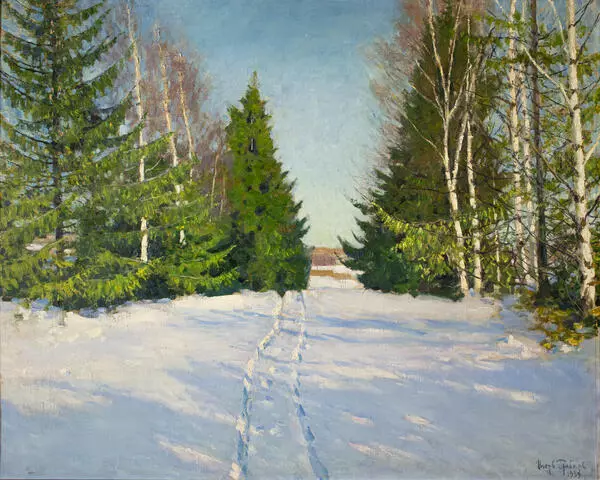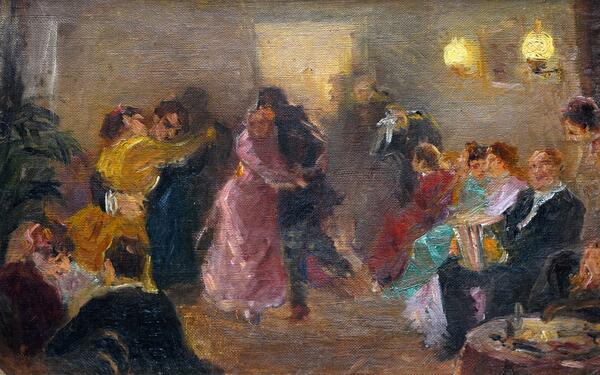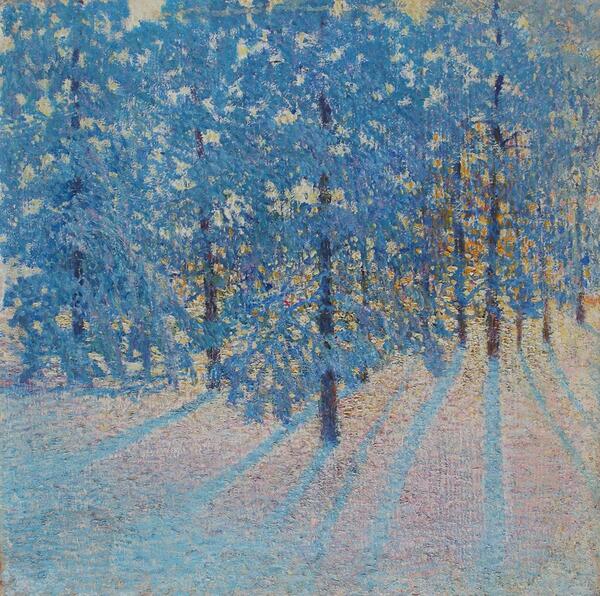Igor Emmanuilovich Grabar was a Russian and Soviet painter, restorer, art critic, educator, museum worker, and teacher. From 1892 he studied in the workshop of Professor Pavel Petrovich Chistyakov, and in 1894 he entered the Imperial Academy of Arts, where in 1895 he studied under Ilya Repin.
The last period of Igor Grabar’s work is distinguished by poetic artworks, which were at the same time the result of the artist’s philosophical understanding of life. In Grabar’s still lifes, the interrelation of the world surrounding the artist and his moods is palpable. These still lifes reflected his impressions and thoughts.
Although Grabar often depicted delphiniums, in this work, they act as an independent and main motif of the composition. The artist seeks to convey the character of these flowers. Rejecting spectacular contrasts, he builds the color palette on cold shades, actively using the tonal variations of blue colors and whitish background, thus intensifying the artwork’s effect. The fresh calm coolness of blue, light blue and similar shades is one of the main elements of this expressive canvas.
The compositional structure together with the color scheme conveys to the viewer a state of quiet excitement, joyful inspiration. The color becomes especially active as it approaches the center of the work; light contrasts intensify, attracting attention to themselves, while the inflorescences, stems and folds of fabric diverging in soft waves carry on beyond the frame.
The vases are painted with dense and even brush strokes, while the flowers — with light and quick ones; the background behind the flowers is more transparent than the heavy tablecloth on the table.
Still life is an amazing opportunity for the artist
to solve many pictorial tasks. In “Delphiniums” Igor Grabar gives himself a
confined space and a limited color palette. He achieves the volume and depth of
the image, reveals and easily conquers space, creating a breathing, trembling
atmosphere. But the still life “Delphiniums” is distinguished not only by its
manner of painting: it is an image, elegant, fragile, full of vitality, lyrical
and intense; it conveys the optimistic worldview of the artist.

